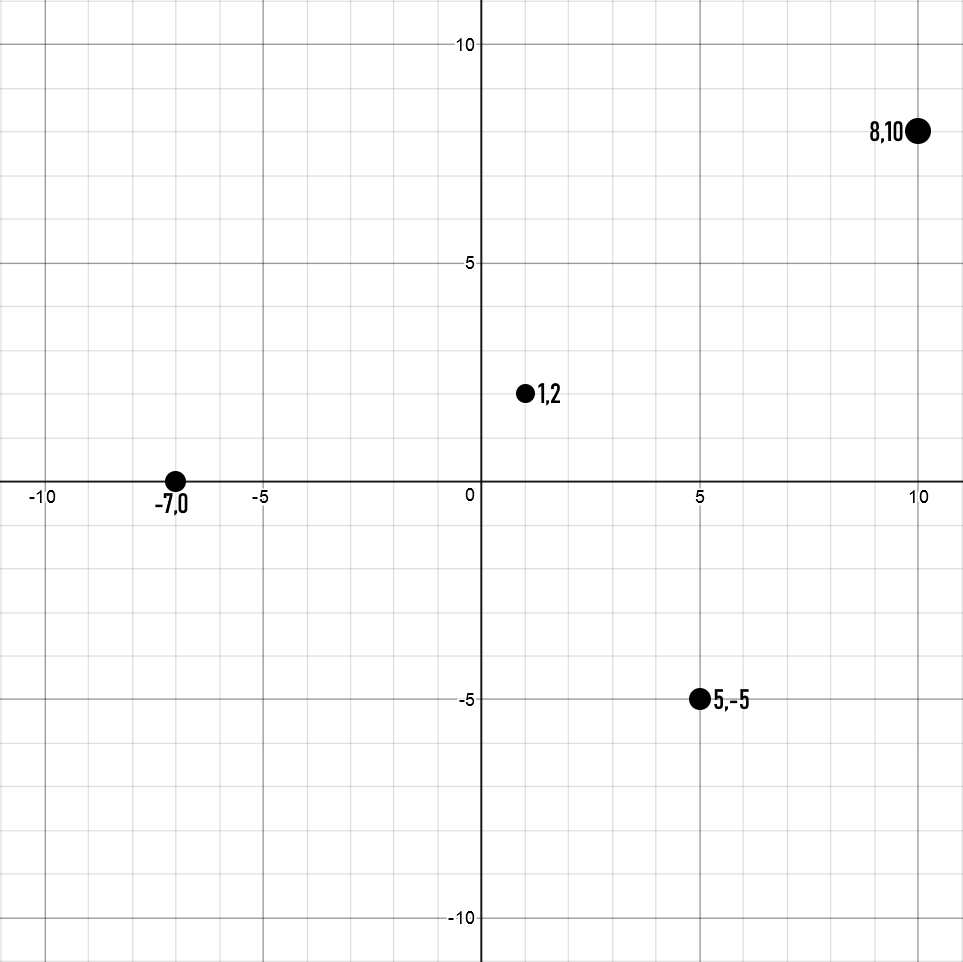In Math 9, I’ve learned many concepts, but I think the following are the most important or interesting:
- The basics of exponents
- Reciprocating fraction division
- Plotting on coordinate axes
- Multiplying numbers w/ exponents
- Dividing numbers w/ exponents
The basics of exponents
It is my belief that exponents are a vital part of math, especially for many later concepts.
Exponents are numbers written in superscript that represent a number multiplied by itself that many times.
For example, which, when expanded (showing the individual multiplications) actually looks like this:
2 2
2
2
2
2 (2 times itself 6 times)
To solve exponents, all that is needed is to expand and multiply each pair of 2s.
2 2 = 4
4 4
4
4 4 = 16
16 4 = 64
is equal to 64.
Reciprocating fraction division
I think that fraction division (in particular, reciprocating fractions) is very interesting due to the unique method of division it presents.
As an example, let’s divide by
. First, we convert
to an improper fraction by multiplying the whole number by the denominator, the bottom number, and adding it to the top number.
2 7 = 14
14 + 2 = 16
Now, we flip the second fraction and make the division a multiplication.
4 7 = 28
6 16 = 96
We can simplify this by dividing by 2.
28 2 = 14
96 2 = 48
14 2 = 7
48 2 = 24
Our final result is $latex \frac{7}{24}.
Plotting on coordinate axes
I think that plotting on coordinate axes is an interesting concept, I think due to the graphing component. The following is a coordinate axis.
 On a coordinate axis, one plots numbers as coordinates, with X being horizontal and Y being vertical. When going up and to the right, both coordinates increase in size, but when going down and to the left, it decreases.
On a coordinate axis, one plots numbers as coordinates, with X being horizontal and Y being vertical. When going up and to the right, both coordinates increase in size, but when going down and to the left, it decreases.
Here is an example of different points on a coordinate axe (reused from my original blog post here.)
 Plotting on a coordinate axis can also be used to display visual representations of patterns (with values from a t-chart), or display shapes.
Plotting on a coordinate axis can also be used to display visual representations of patterns (with values from a t-chart), or display shapes.
Multiplying numbers w/ exponents
I find multiplying numbers with exponents very interesting, as an example of the “laziness” of exponents.
Multiplying numbers with exponents is not very difficult, if one already knows how exponents work. In fact, it is not necessary for the base (big, normal) number to be multiplied if both are the same. only the exponents. Except the exponents are not multiplied in this case, they are added.
For example, if is multiplied by
, one can simply write the answer
, but if
was multiplied by
, one would have to determine the actual values of
and
before multiplying them together.
Dividing numbers w/ exponents
As with multiplying numbers with exponents, I find it very interesting as another example of exponent “laziness.”
Like multiplying numbers, dividing numbers with exponents is significantly easier if the base numbers being divided are the same, so dividing by
can be written as
, but not
and
. In the latter case however, one can divide the base numbers and subtract the exponents, unlike multiplication.
